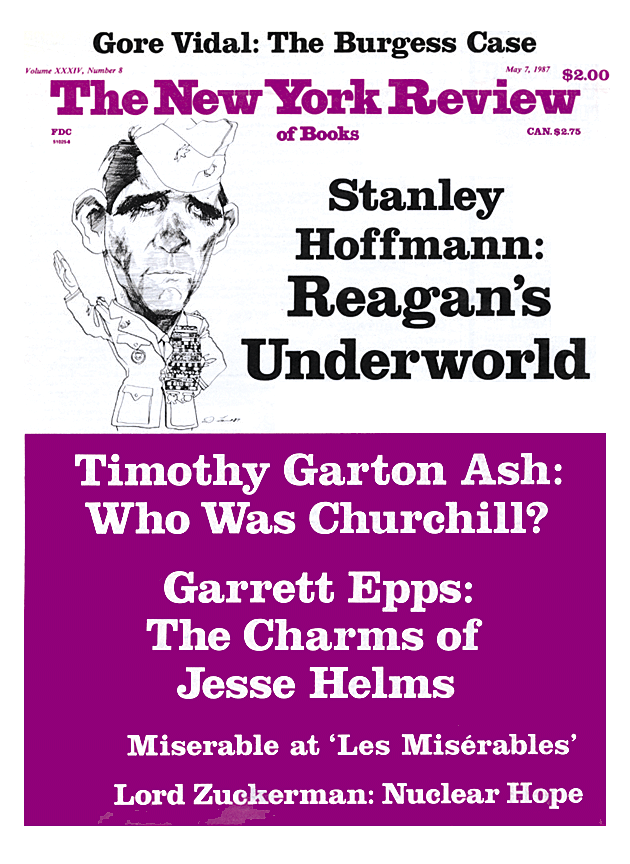On January 28, 1987, Hungarian police confiscated all of the items—thirty-nine pieces—of a dissident art exhibition in Budapest.
Last summer an international fine art competition was announced in The New York Review of Books [August 14, 1986] by the dissident Hungarian art group “Inconnu.” Its members include: Peter Bokros, 33, Tamás Molnár, 32, and Robert Pálinkás, 22. The theme of the competition was “The Fighting City,” in commemoration of the thirtieth anniversary of the Hungarian Revolution in 1956. The art competition was sponsored by Timothy Garton Ash, Danilo Kis, George Konrád, and Susan Sontag.
In a later announcement [NYR, December 4, 1986] the Inconnu Group described the police threats they had received. They were told to be banned from Budapest if they were to go ahead with the exhibition. The group also said that there was “a reason to suppose that some of the artworks sent through the mail were never delivered by orders of the authorities” and they asked the artists to notify the “Hungarian October Information Centre” in London if they send something to Budapest.
It became clear that at least three artworks sent to Budapest have never been delivered to the addressees—the works of Joseph Dobay, Jo Siddens, and Iris Stocubridge, all living in the US. On December 18, 1986, the Hungarian police raided the flat of Jenö Nagy, a samizdat publisher and, among other things, confiscated some of the artworks that had arrived for the competition and were kept in Nagy’s house.
The Inconnu Group decided to open their exhibition and auction on January 28, 1987 in a downtown private flat in Budapest. All of the preparations had been ready and silkscreen-printed invitation cards had been distributed among their friends when, at twelve o’clock, five hours before the planned opening time of the exhibition, Hungarian police raided the flat and confiscated all of the thirty-nine items of the exhibition. The artworks had been sent by artists from Hungary, Britain, the US, the Netherlands, and Yugoslavia. A case will be made against the organizers of the exhibition, including the tenant of the flat, Tibor Philipp, and heavy fines are likely.
Nevertheless, the exhibition opened on schedule with an audience of some one hundred persons. In the place of the confiscated artworks the copies of the police receipt were displayed. The room was decorated; the speeches made at the opening recalled the 1956 Revolution, spoke of the inquisition pursued by the totalitarian authorities, and emphasized the fact that the poor in Hungary were robbed because the artworks would have been auctioned and the money given for charity purposes.
So the “Fighting City” was once again defeated. But, again, the victory was not complete. Before the planned exhibition the artworks had been recorded in video and the pictures were shown on TV to the audience. Catalogs will be made and sent to the contributors. But the question remains: How these fascist actions fit with the “liberal” image of Hungary and with the alleged “glasnost” (openness) of the Gorbachev era.
This Issue
May 7, 1987


